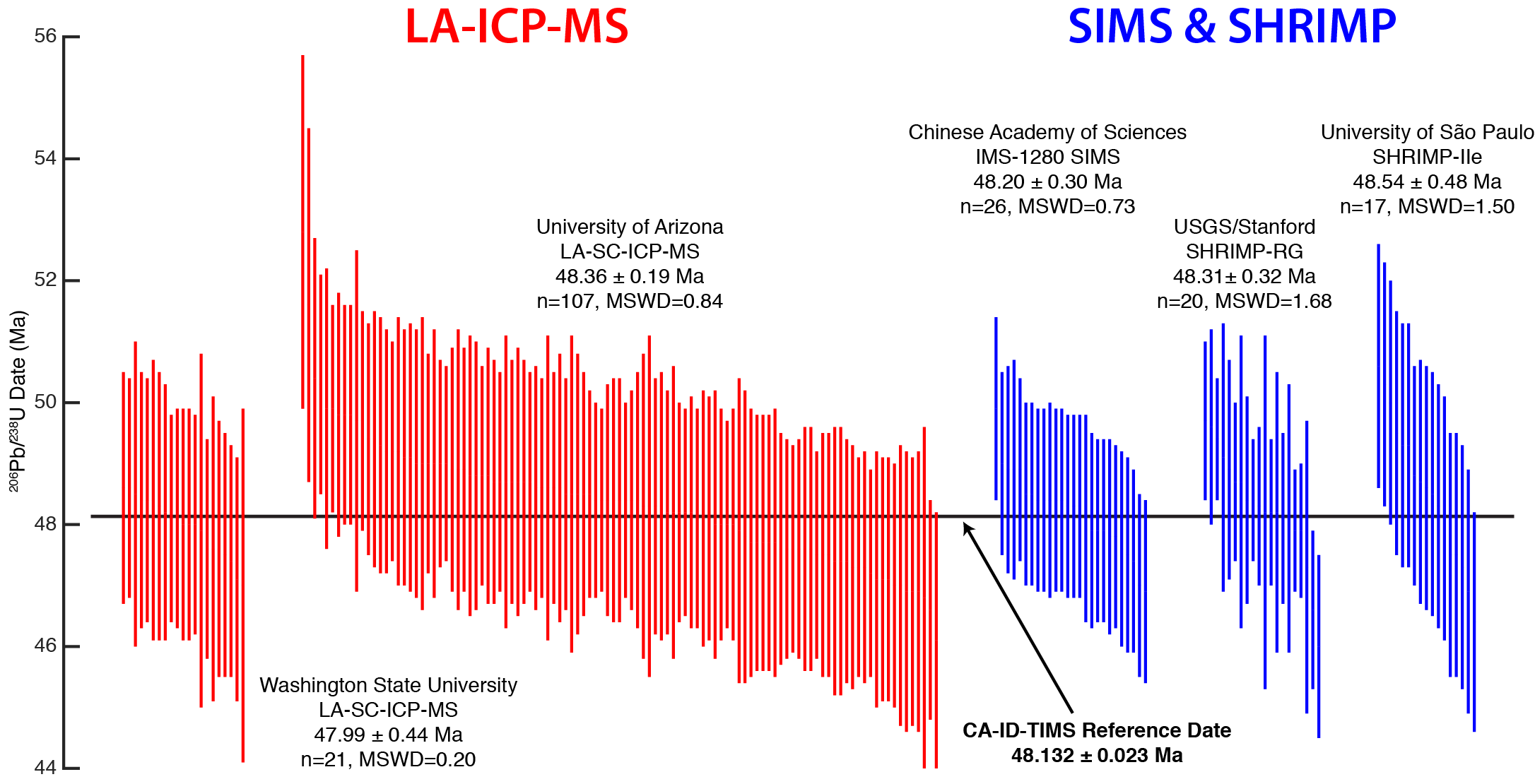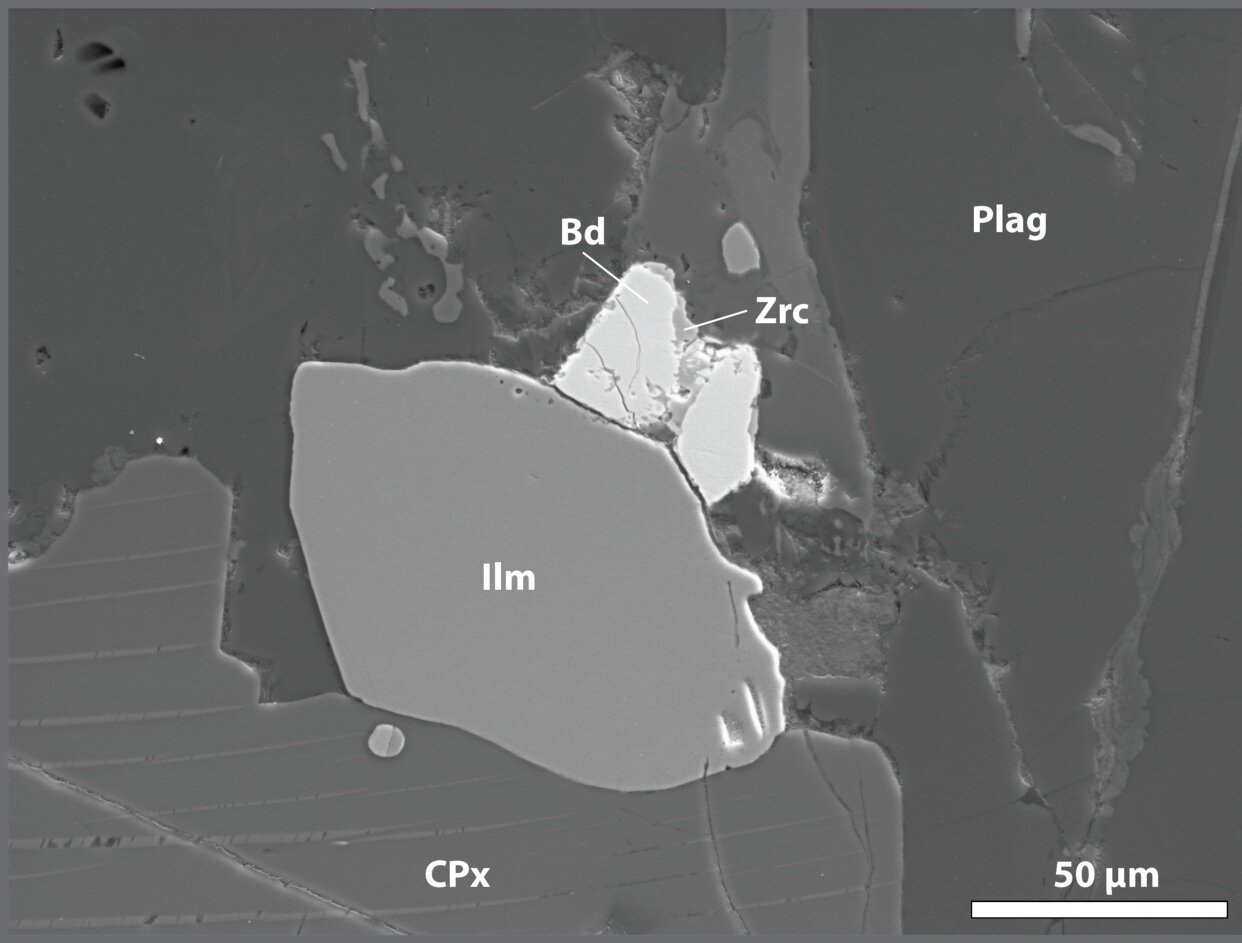Zircon and Baddeleyite Research
Above: Composite cathodoluminescence image from a ca. 1 x 4 cm portion of a Mud Tank carbonatite zircon megacryst (see Tompkins et al., 2020)
The minerals zircon (tetragonal ZrSiO4) and baddeleyite (monoclinic ZrO2) play a central role in our understanding of geologic time, crustal differentiation, global plate tectonic reconstructions, amongst many other cool things. Our lab has a continued interest in studying these minerals, looking for ways to continue pushing the limits of the temporal as well as geochemical information that can be harnessed from them. Below are some highlights of the research we have conducted on these phases or are actively pursuing.
Highlights
Uranium isotopes in zircon
Along with collaborator François Tissot we developed a routine to measure the uranium isotopic composition (238U/235U) of individual zircon crystals, with a precision better than that offered by ‘recommended’ values. This arguably also comes with improvements in accuracy, presenting significant opportunities to better understand the geochemistry of zircon, U isotope variability and fractionations in high-temperature environments, and has the potential to improve the accuracy of high-precision U-Pb and Pb-Pb geochronology.
Results of this study are presented in Tissot et al. (2019), in the Journal of Analytical Atomic Spectrometry (JAAS).
Reference Materials for U-Pb Zircon Geochronology and lu-hf isotopes
With collaborator Mike Eddy (Purdue U.) we have been working on developing new reference materials for zircon U-Pb geochronology and Lu-Hf isotope analyses. The zircon geostandard GHR-1 is now widely used as secondary reference for Cenozoic zircon dating by micro-beam methods, and will also begin to be used as part of an interlaboratory experiment between CA-ID-TIMS labs.
The characterization of GHR-1 was published in Eddy et al. (2018), in the journal Geostandards and Geoanalytical Research.
Baddeleyite U-Pb Geochronology and isotope geochemistry
Baddeleyite is a common mineral in mafic igneous rocks and can be used for U-Pb geochronology. However, this mineral remains under-utilized in geochronologic studies due to several issues. I have been working to improve techniques for dating baddeleyite in collaboration with Mike Eddy (Purdue U.) and Joel DesOrmeau (University of Nevada Reno). These efforts have included helping generate methods for dating baddeleyite by LA-ICP-MS by calibrating a baddeleyite reference material (Ibanez-Mejia et al., 2014). Currently our research team is working to characterize the effects of radiation damage in the mineral. The goal is to ultimately develop methods that will reduce or eliminate Pb-loss in baddeleyite and permit the production of both accurate and precise dates using this mineral. This development would open the door for new research on the timescales of mafic magmatic processes as well as permit detailed geochronology of basalt in stratigraphic sections.
the zr stable isotope record of zircon and baddeleyite
We developed analytical methods to measure the Zr stable isotope composition of zircon and baddeleyite at high accuracy and precision, using the double-spike method. We are currently using these techniques to: 1) identify the mechanisms that drive mass-dependent Zr isotope fractionation in high-temperature environments, and 2) better understand the petrogenetic significance of fractionated compositions as recorded by single zircon and baddeleyite crystals.
More information on this research can be found here.




